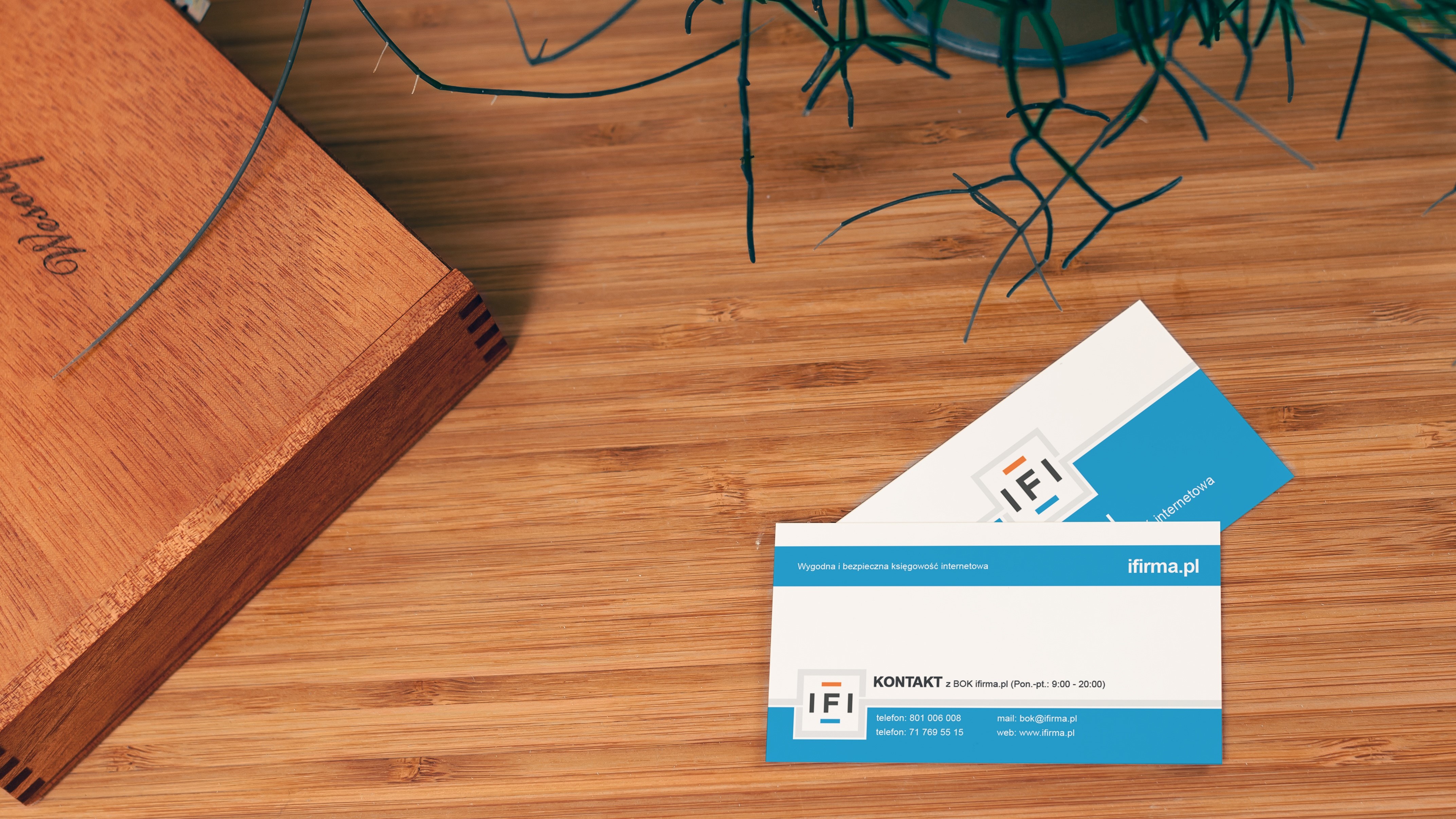
A business card is not just a piece of paper containing contact information. It's a visual representation of your business and something you must pay attention to. A well-designed business card markets your brand and helps generate sales. It’s a simple yet effective tool to drum up interest in your business.
We want to examine 5 essential design rules for business cards. These rules help you create business cards that'll stand out and make a lasting impression on whoever you give them to.
1. Keep the design simple and clear
Simplicity is a strength when it comes to designing business cards. The fewer elements on a card, the easier for the reader to absorb relevant information. Resist the temptation to place many design elements on a card and overcrowd it with information. Instead, include only the essential details like personal name, company name, title, phone number, email address, and website. Simplicity makes these details stand out and allows recipients to easily remember them even when they’re not with the card.
The contact details should be clear and precise. It's better to have a single phone number and email address that's easy for the recipient to cram, although two or three still work. A generic admin@companydomain is fine, but name@companydomain feels more personalized and nicer. Alongside contact details, you can also add social media icons and your brand’s username next to each icon, encouraging people to visit your social media profiles and message you.
2. Choose good typography
Typography is another vital factor to consider when designing business cards. You need a clean, professional typeface that's easy for anyone to read despite the card's small size. Use two fonts at most to maintain a cohesive look, usually one for the headline (company name) and another for the body (contact details).
Avoid fancy fonts that are difficult to read. They look aesthetically pleasing but will likely confuse whoever you give your business card to. Besides, fancy fonts are not what people associate with a professional business: they make your company look childish.
3. Incorporate your brand colors
Every brand has unique colors that people associate with it. Incorporating brand colors in your company’s business card makes the card more memorable. Using your brand colors builds consistency and makes people remember your company whenever they see your card.
If your brand's colors are bold, you can use them as accents instead of the card background to keep the text readable. Use only a few colors to avoid confusing the card recipient. Any card not in line with your brand colors might confuse the person you give it to.
4. Use high-quality paper
The quality of your business card's paper says a lot about your brand. Low-quality cards (of light paper) are easy to spot and give the recipient a wrong impression about your brand. Like it or not, a low-quality card hints at a brand that should not be taken seriously. “If a business can’t invest in items that make it look professional, why should it be taken seriously?” is a typical thought process.
Thick paper feels luxurious and makes the recipient keep the card longer. Some people use metallic cards to give an elegant feel, but that’s not necessary. High-quality paper will suffice to give people a good impression of your brand.
5. Personalization
You can add a personalized touch to make your business card stand out. This could be a custom illustration, a QR code linking to your website, a magnetic back, a quirky shape, etc.
Consider the business card in the image below. A photography studio issued this card with a transparent side resembling a camera. The uniqueness can amuse the recipient and make them more likely to remember the details.
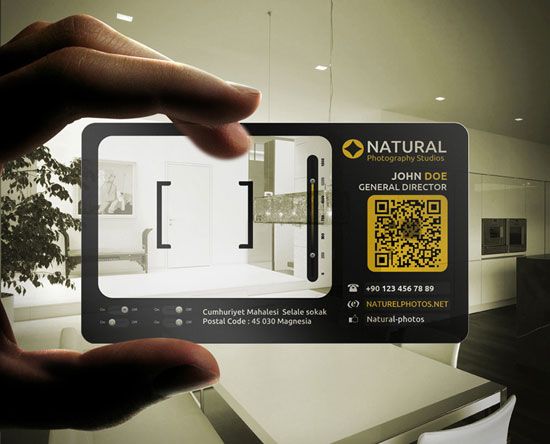
Below is another creative business card styled like a mobile phone. Anyone you give such a card will likely appreciate its uniqueness and keep it as a long-term souvenir.
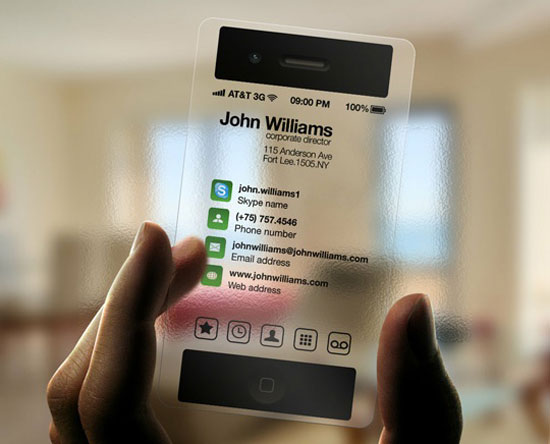
There are endless ways to express creativity with your business cards. Adding something different will increase people's interest in your card and boost conversions.
Should I design the business card myself or get a professional designer?
If you have no graphic design experience, hiring a professional designer to help you create the perfect business card is advisable. You'll give the graphic designer your requirements, and they'll get to work creating the business card you want. You can find a local graphic designer or hire one online. Freelance platforms like Fiverr and Upwork make it easy to find professional designers, and you’ll only pay after getting satisfactory work.
If you have graphic design experience, you can take a shot at creating the business card yourself. The good news is that making a business card has become easier than ever, thanks to design platforms like Canva and numerous print-on-demand platforms. You can access professional business card templates and edit them to fit your tastes, a much more convenient option than designing a card from scratch. If you get the ideal design, you can upload it to a print-on-demand platform and have the cards delivered to your doorstep later.
For example, Canva is a popular visual design tool that helps users create numerous documents and office items. This platform has over 16,000 business card templates cutting across different industries. If you find it challenging to create an appealing business card from scratch, choose one of Canva’s templates and edit the elements to get what you want.
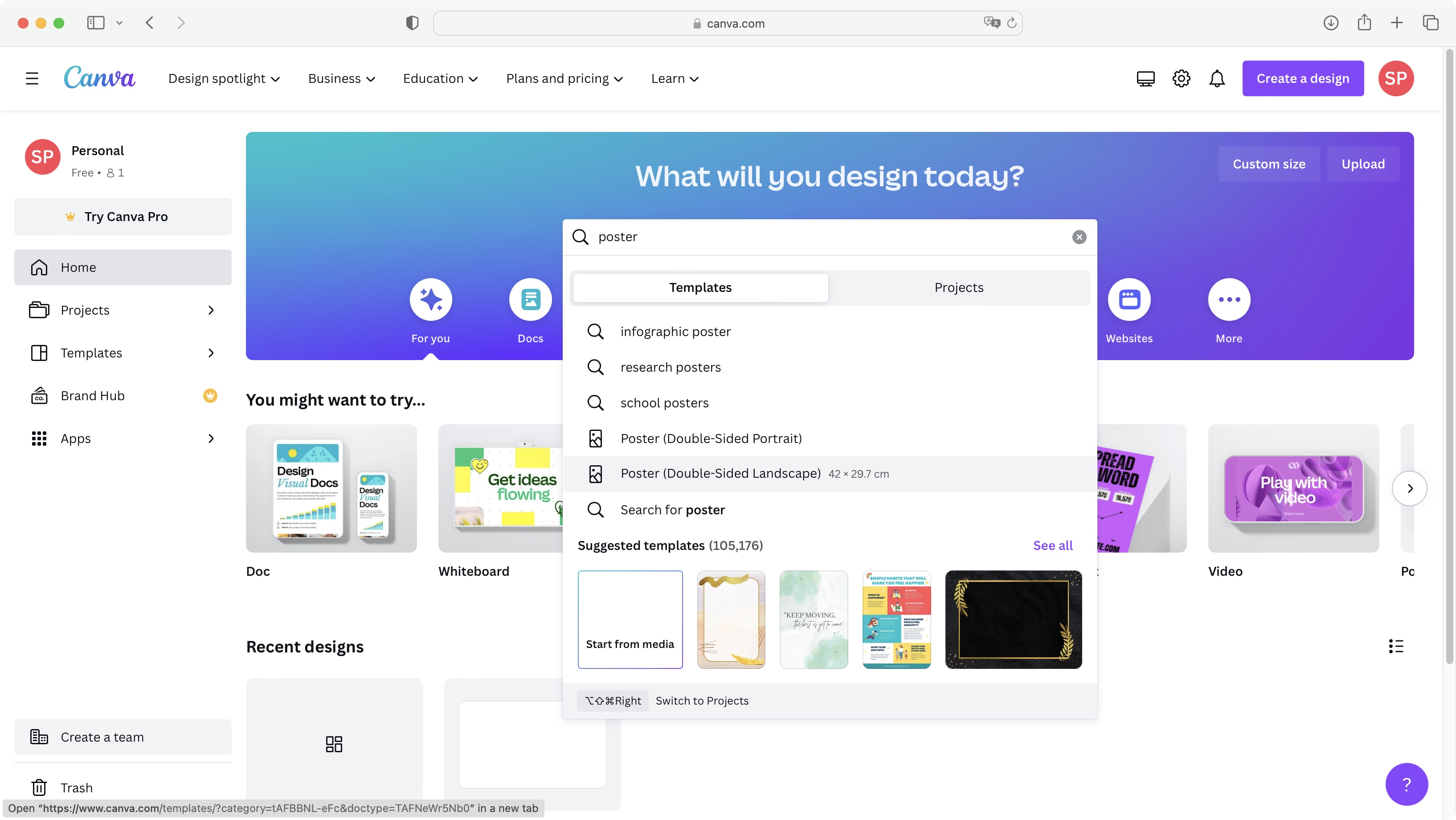
Canva also lets you create a business card from scratch. It provides tens of thousands of virtual elements to personalize your card. You have infinite fonts, icons, images, colors, backgrounds, shapes, and other graphic elements to beautify your card.
After getting the perfect design, you can download it as a PDF for further editing and printing. PDF is the best format for business cards because PDF files can easily be opened, shared, and edited, unlike some formats requiring specialized software. PDF is the universal format that preserves any document's formatting, graphics, and color regardless of the application used to create it.
With your PDF document set, printing the card is the next logical step. You can find a local outlet that prints business cards and other graphical items. Check reviews to see what previous customers say about the outlet. Does the printing shop use high-quality paper? Do they offer top-notch assistance? Do they deliver on time? Etc.
Remember we talked about high-quality paper as a major design consideration. Hence, abstain from any print shop with a history of using substandard material. No matter how well-designed your business card is, substandard paper quality will ruin it.
The alternative to a local print shop is to use a print-on-demand service. These are platforms you hand your business card design to, and they’ll print and deliver the cards directly to your doorstep. Print-on-demand services take away the stress of visiting a physical print shop and haggling with personnel. Every interaction takes place online. You’ll provide the design and your specifications, i.e., size, quantity, and quality. Once confirmed, wait for the business cards to arrive at your doorstep.
A print-on-demand service is preferable for printing a large number of cards. For example, if you need to print over 2,000 business cards, using an online service with experience in mass deliveries is better. Online printing services have access to more sophisticated equipment and expertise than local print shops dealing with smaller orders. But don’t just choose any online printing service. Read reviews to see what previous customers have to say about the service. Overwhelmingly positive reviews signal that you’re in good hands, while majorly negative reviews are a sign to think twice.
Vital elements of a business card
Every business card must have some crucial elements to build productive relationships and get conversions. They include:
1. Name
The name should be your business card's first and most prominent feature. It should have both your name and your company's name written clearly. Write your formal name, not nicknames, and your job title. Use legible and bold fonts so the card recipient can quickly notice the name.
2. Address
If your company has a physical address, don't hesitate to put it on your business card. You can even include a map at the back of the card to give it a personal touch. The address should be written clearly so that whoever you give your card to can easily locate it.
3. Phone number
The card should include your business phone number so people can contact you. If your business has multiple phone numbers, the most direct line should come first. Separate phone numbers with commas, hyphens, or periods to make them readable. Use a consistent font for the phone number and other text elements on the business card.
4. Email address
You should include your company’s email address on the card so people can contact you. If you have multiple business emails, the one you use most should come before the others. The email address(es) should be very visible to the reader.
5. Web address
Virtually all businesses in this era have a website. Ensure you include your company’s website address on the business card so recipients can visit it to learn more about your company. After viewing a well-designed website stating your value proposition, they might be compelled to do business with you.
6. Social media icons and handles
It is becoming more common to include social media handles on corporate cards. If you run a business relying heavily on social media for customer interaction, it’s wise to include social media icons alongside your handle. This way, anyone you give the card to can visit your social media page and interact further with your brand.
Below is a good example of what we’re talking about. Observe the social media icons and handles clearly written on the card, with a call to action for the reader - Follow Us. This card template will help drive more social media engagement for a business.
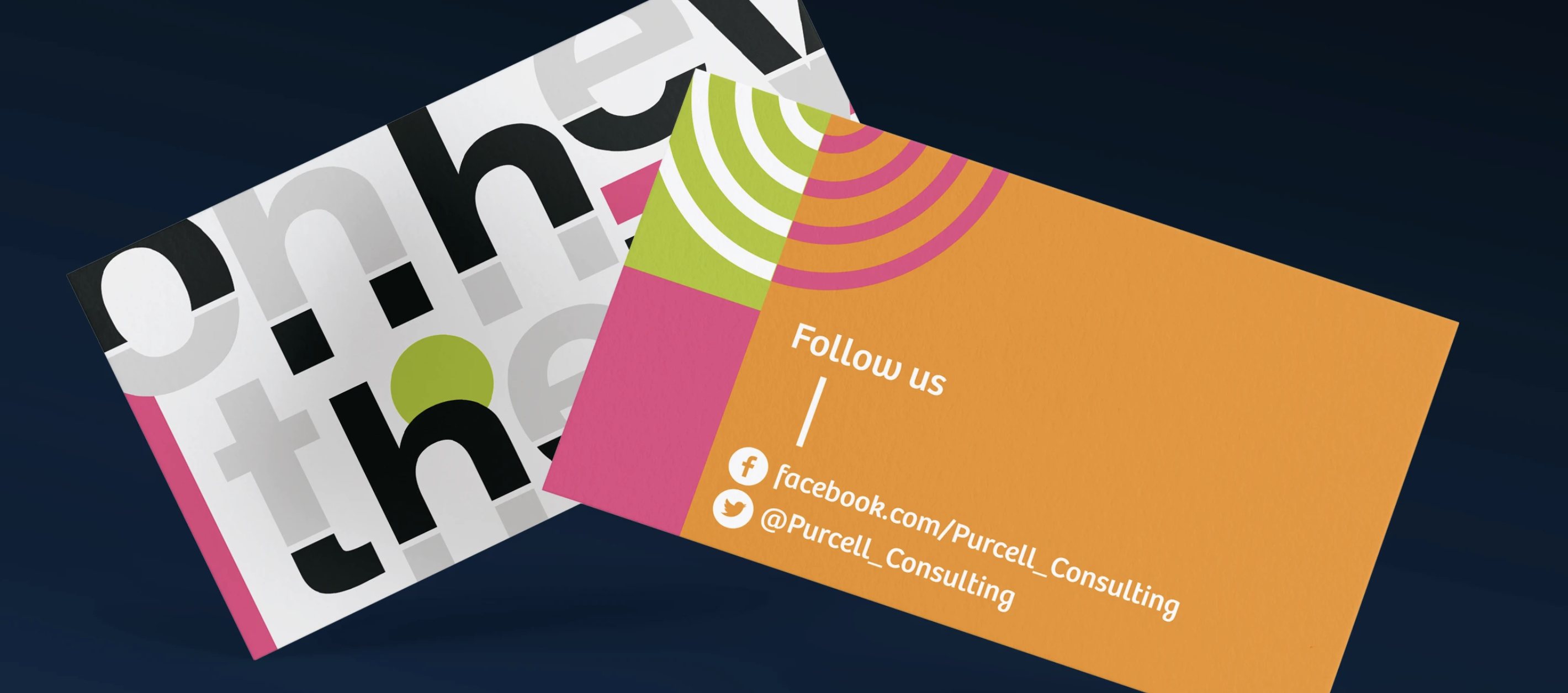
7. Tagline
The card should describe your business briefly and precisely. Anyone who reads the description should be able to understand what your business offers. Use yourself as the test case—can you discern the value proposition after reading the tagline? If the answer is no, you need a clearer description of your business. You can also include a small list of the services you offer.
8. QR code
A QR code is an interactive feature you can add to your business card. Anyone can scan the QR code and be directed to your website, landing page, or video that precisely explains your value proposition. This feature is becoming increasingly common and is one of the creative aspects of designing a business card we mentioned earlier.
9. Logo
If your business has a unique logo, you can place it on the card to establish a brand identity and give clients a memorable image to relate to your company.
10. Call-to-action
Your business card can have a call to action to drive clients to take a specific action. It can be "schedule a meeting," "contact us," "visit our website," "email us," or anything else that drives someone to interact more with your business. A call to action helps clients remember your brand and take the required steps to interact with your business.
Final words
A business card is one of the most critical corporate documents, and a well-designed card can make a lasting impression on potential clients. To create a successful business card, make the design and elements simple, use bold and clear typography, incorporate your brand colors, and print the card on high-quality paper. Feel free to personalize the card to make your brand stand out, e.g., using a distinct card shape or QR code.
In this article, we’ve explained the 5 crucial design rules for successful business cards. Follow our tips to create a card that’ll bring in better conversions for your business.







